#Linux Online Practice
Explore tagged Tumblr posts
Text
Linux for Developers: Essential Tools and Environments for Coding
For developers, Linux is not just an operating system—it's a versatile platform that offers a powerful array of tools and environments tailored to coding and development tasks. With its open-source nature and robust performance, Linux is a preferred choice for many developers. If you're looking to get the most out of your Linux development environment, leveraging resources like Linux Commands Practice Online, Linux Practice Labs, and Linux Online Practice can significantly enhance your skills and productivity.
The Linux Advantage for Developers
Linux provides a rich environment for development, featuring a wide range of tools that cater to various programming needs. From command-line utilities to integrated development environments (IDEs), Linux supports an extensive ecosystem that can streamline coding tasks, improve efficiency, and foster a deeper understanding of system operations.
Essential Linux Tools for Developers
Text Editors and IDEs: A good text editor is crucial for any developer. Linux offers a variety of text editors, from lightweight options like Vim and Nano to more feature-rich IDEs like Visual Studio Code and Eclipse. These tools enhance productivity by providing syntax highlighting, code completion, and debugging features.
Version Control Systems: Git is an indispensable tool for version control, and its integration with Linux is seamless. Using Git on Linux allows for efficient version management, collaboration, and code tracking. Tools like GitHub and GitLab further streamline the development process by offering platforms for code sharing and project management.
Package Managers: Linux distributions come with powerful package managers such as apt (Debian/Ubuntu), yum (CentOS/RHEL), and dnf (Fedora). These tools facilitate the installation and management of software packages, enabling developers to quickly set up their development environment and access a wide range of libraries and dependencies.
Command-Line Tools: Mastery of Linux commands is vital for efficient development. Commands like grep, awk, and sed can manipulate text and data effectively, while find and locate assist in file management. Practicing these commands through Linux Commands Practice Online resources helps sharpen your command-line skills.
Containers and Virtualization: Docker and Kubernetes are pivotal in modern development workflows. They allow developers to create, deploy, and manage applications in isolated environments, which simplifies testing and scaling. Linux supports these technologies natively, making it an ideal platform for container-based development.
Enhancing Skills with Practice Resources
To get the most out of Linux, practical experience is essential. Here’s how you can use Linux Practice Labs and Linux Online Practice to enhance your skills:
Linux Practice Labs: These labs offer hands-on experience with real Linux environments, providing a safe space to experiment with commands, configurations, and development tools. Engaging in Linux Practice Labs helps reinforce learning by applying concepts in a controlled setting.
Linux Commands Practice Online: Interactive platforms for practicing Linux commands online are invaluable. They offer scenarios and exercises that simulate real-world tasks, allowing you to practice commands and workflows without the need for a local Linux setup. These exercises are beneficial for mastering command-line utilities and scripting.
Linux Online Practice Platforms: Labex provide structured learning paths and practice environments tailored for developers. These platforms offer a variety of exercises and projects that cover different aspects of Linux, from basic commands to advanced system administration tasks.
Conclusion
Linux offers a powerful and flexible environment for developers, equipped with a wealth of tools and resources that cater to various programming needs. By leveraging Linux Commands Practice Online, engaging in Linux Practice Labs, and utilizing Linux Online Practice platforms, you can enhance your development skills, streamline your workflow, and gain a deeper understanding of the Linux operating system. Embrace these resources to make the most of your Linux development environment and stay ahead in the ever-evolving tech landscape.
0 notes
Text
KIP'S BIG POST OF THINGS TO MAKE THE INTERNET & TECHNOLOGY SUCK A LITTLE LESS

Post last updated November 23, 2024. Will continue to update!
Here are my favorite things to use to navigate technology my own way:
A refurbished iPod loaded with Rockbox OS (Rockbox is free, iPods range in price. I linked the site I got mine from. Note that iPods get finicky about syncing and the kind of cord it has— it may still charge but might not recognize the device to sync. Getting an original Apple cord sometimes helps). Rockbox has ports for other MP3 players as well.
This Windows debloater program (there are viable alternatives out there, this one works for me). It has a powershell script that give you a little UI and buttons to press, which I appreciate, as I'm still a bit shy with tech.
Firefox with the following extensions: - Consent-O-Matic (set your responses to ALL privacy/cookie pop-ups in the extension, and it will answer all pop-ups for you. I can see reasons to not use it, but I appreciate it) - Facebook Container ("contains" Meta on Facebook and Instagram pages to keep it from tracking you or getting third party cookies, since Meta is fairly egregious about it) - Redirect Amp to HTML (AMP is designed for mobile phones, this forces pages to go to their HTML version) - A WebP/AVIF image converter - uBlock Origin and uBlacklist, with the AI blacklist loaded in to kill any generative AI results from appearing in search engines or anywhere.
Handbrake for ripping DVDs— I haven’t used this in awhile as I haven’t been making video edits. I used this back when I had a Mac OS
VLC Media Player (ol’ reliable)
Unsplash & Pexels for free-to-use images
A password manager (these often are paid. I use Dashlane. There are many options, feel free to search around and ask for recs!). There is a lot that goes into cybersecurity— find the option you feel is best for you.
Things I suggest:
Understanding Royalty Free and the Creative Commons licenses
Familiarity with boolean operators for searching
Investing in a backup drive and external drive
A few good USBs, including one that has a backup of your OS on it
Adapter cables
Avoiding Fandom “wikias” (as in the brand “Fandom”) and supporting other, fan-run or supported wikis. Consider contributing if its something you find yourself passionate or joyful about.
Finding Forums for the things you like, or creating your own*
Create an email specifically for ads/shopping— use it to receive all promotional emails to keep your inbox clean. Upkeep it.
Stop putting so much of your personal information online— be willing to separate your personal online identity from your “online identity”. You don’t owe people your name, location, pronouns, diagnoses, or any of that. It’s your choice, but be discerning in what you give and why. I recommend avoiding providing your phone number to sites as much as possible.
Be intentional
Ask questions
Talk to people
Remember that you can lurk all you want
Things that are fun to check out:
BBSes-- here's a portal to access them.
Neocities
*Forums-- find some to join, or maybe host your own? The system I was most familiar with was vbulletin.
MMM.page
Things that have worked well for me but might work for you, YMMV:
Limit your app usage time on your smartphone if you’re prone to going back to them— this is a tangible way to “practice mindfulness”, a term I find frustratingly vague ansjdbdj
Things I’m looking into:
The “Pi Hole”— a raspberry pi set up to block all ads on a specific internet connection
VPNs-- this is one that was recommended to me.
How to use computers (I mean it): Resources on how to understand your machine and what you’re doing, even if your skill and knowledge level is currently 0:
This section I'll come back an add to. I know that messing with computers can be intimidating, especially if you feel out of your depth. HTML and regedits and especially things like dualbooting or linux feel impossible. So I want to put things here that explain exactly how the internet and your computer functions, and how you can learn and work with that. Yippee!
793 notes
·
View notes
Text

Free Resources for Learning Cybersecurity
I created this post for the Studyblr Masterpost Jam, check out the tag for more cool masterposts from folks in the studyblr community!
Free Online Courses
Linux Foundation Cybersecurity Courses - many of their beginner/introductory courses are free
Professor Messer's Security+ Course - a great intro to cybersecurity, gave me the skills to pass my Security+ exam
Khan Academy Cryptography - solid foundations for understanding the math behind encryption
ISC2's new entry level cert & training CC is free, although for a limited time
Linux Journey - learn Linux, the command line, and basic networking
Free CTFs & Ways to Practice
What is a CTF? - HackTheBox isn't a free platform, but this is a good article explaining what a CTF is and how to approach it
OverTheWire Bandit - practice your Linux skills
PicoCTF - this one already ran this year but their website has plenty of resources
Microcorruption - binary exploitation challenges
Hacker101 - web security CTF
Cryptopals Cryptography Challenges
Nightmare - binary exploitation & reverse engineering challenges
Cybersecurity News: follow what's happening in the industry
KrebsOnSecurity - security & cybercrime news, investigative journalism
SANS StormCast - daily 5-minute security news podcast
SANS Internet Storm Center - security blog posts
Cisco Talos blog - security news, threat intelligence & malware investigations
Schneier on Security - security & society
Black Hills Information Security webcasts
Darknet Diaries podcast
Other Free Resources
Trail of Bits's CTF Field Guide
PicoCTF Resources and Practice
SANS Cheat Sheets - all areas of security & tech
OWASP Cheat Sheets - application security & web attacks
LaurieWired's YouTube channel - high-quality videos on low-level tech
LiveOverflow's YouTube channel - binary exploitation
SANS Webinars
Cybersecurity Certifications Roadmap
Cybersecurity Job Supply and Demand Map (for the U.S.)
EFF's Surveillance Self-Defense - guides for how to protect yourself online
Don't Forget the Library!
If you have access to a public or school library, check out their technical books and see what they have to offer. O'Reilly and No Starch Press are my favorite publishers for technical and cybersecurity books, but be on the lookout for study guides for the Security+ and other certifications - these will give you a good introduction to the basics. I wrote more about cybersecurity books in yesterday's masterpost.
48 notes
·
View notes
Note
Hi Pia.
I want to ask— do you backup your wips? How do you do it?
I know there are things like Cloud and Dropbox but those are practically at the mercy of big corporations and with ai scraping now being the norm it feels risky saving work with online backup.
Do you use a USB instead?
Unfortunately nothing is risk-free these days.
I once saved a story to three different USBs, all different brands, and they all corrupted. Not all at the same time, but they all eventually lost the data. This was over a period of ten years, but of course some people have been relying on USBs etc. for this long now. Same with CDs burnt with data (something we used to do before USBs were cheap).
In fact a new study shows that over half of all external hard drives and USBs over a certain age (I think around 5 years) are already corrupted and often not being checked enough to check if they're still containing/keeping the data necessary. (To say nothing of entire batches of like Seagate and other brands being notorious for literally just...losing data and corrupting at any point in time - which is an issue for actual hard drives within the computer as well).
USBs and external HDs aren't necessarily safer.
In general it's a good idea to back up in three places, though this still isn't enough to guarantee safety. Those three places should be: a) hard copy (i.e. USB or external hard-drive), b) cloud copy (i.e. Dropbox etc.), c) on the machine itself (if it's a desktop). You can sometimes do like, a + a + c or b + b + a etc.
It still doesn't guarantee preservation of data! I think that's the hardest thing about preserving data and back-ups overall.
I have an extra bonus 'back up' in that 99.5% of all my writing is already public. And that a lot of that writing has additionally been snapshotted into the Wayback Machine. If all my methods somehow corrupted or failed, I could literally copy/paste my stories from AO3 back into Word documents (in fact I've actually done this before because I frequently go back in and edit AO3 chapters for typos etc. but don't mirror those changes in the original documents, so sometimes if I want to update a story, I'll copy/paste the AO3 chapter and override the original document).
Anyway, I use Dropbox Business (cloud), hard external copy (though not as often as I should), desktop version, and then also the AO3 version. Dropbox Business has additional data recovery protections that general Dropbox accounts don't.
We are always at the mercy of big corporations, anon. Big corporations make USBs. They make faulty external hard-drives that we sometimes mistakenly trust. Like no, they're not scraping for AI the same way, but I no longer believe - unfortunately - that this is truly preventable. Short of going a grassroots Linux direction, which...I can't, lol.
(This is a reminder to all writers: Back-up your writing! The beginning of the year is a good time to remember to do it, if you're not doing it every 3 months).
(And also, check all your USB/external hard drives! And make sure they're not your only source for that content, because you would not believe how much they degrade over time.)
If I ever needed a 5th option, I host my own domain and have done so through the same company for over 10 years with very high fidelity, and I would just dump it all into a database there so I could pull it back if necessary. That's not ideal (it's probably the easiest way I could be hacked because I check into the cpanel the least often), but it's doable.
But yeah I've been Dropbox Business for a long time. I don't like everything about them, but I trust them a lot more than Microsoft OneDrive (which I refuse to use) and many other cloud networks.
As for AI scraping, since 99.5% of my stuff is on AO3, it's already been scraped, and it's delusional of me to think it hasn't been. I have already had the majority of my art scraped into Midjourney, so sadly I've reached a level of disgusted acceptance that the gormless unethical billionaires of the world will just do what they want. If it has an internet connection to it, it's probably been scraped or will be scraped and putting something on a USB isn't going to stop that, because it needs to come off a USB if I want to work on an ongoing story.
#asks and answers#pia on writing#back up your data!#back up your writing!#honestly my first experience of losing data was#that when i was about 11 years old i typed a science fiction novel#and was printing it out as i went and had it backed up onto floppy disc at the same time#my mum threw out all 100+ pages (size 10 courier font)#and then the floppy discs died#i lost everything#this was before the internet was really a thing#and desktop computers were largely used for writing letters and faxes and games#and printing shit out#and sometimes faxing#nothing's safe#we only have degrees of safety#but safety is only ever an illusion we pull around ourselves like a blanket#until we realise that the bedbugs came too
18 notes
·
View notes
Note
I have my troll headcanons, and this is gonna be a long one, I’m doing all the Beta trolls. Also note these headcanons assume all characters survive and exist on Earth C.
Aradia Megido is trying to puck back up on the hobbies she abandoned when she became a ghost, and with her luck Earth has a vast archeological expanse of history and paleontology that Alternia destroyed to legitimize the Condesce’s rule, and to erase any mention of organized rebellion against the empire. Of course, history still existed, but is almost exclusively known by highbloods who have the class and age to study writing, own journals to write on, live long enough to document dozens of sweeps of their life history, and have less of a chance to get culled by drones controlling population growth. Reassembling Alternian history on Earth C is like finishing a jigsaw puzzle with the pieces hiding across the empty void of space. Aradia likes to search for fossils, but her interest in the dead and telekinetic connection with ghosts make her a professional paranormal investigator as well, she once snuck into a haunted house being filmed for a ghost hunters TV show, and was caught on camera. Her ripped clothes and ruffled hair from attempting a breaking and entering made her look like an undead troll.
Tavros thinks Pokémon is too simple and amateur for him, when in reality he’s mad he still loses in competitive matches in both card game and online game. He still likes the Pokémon anime! A boy who never grows up going on adventures against an organized crime syndicate trying to steal a powerful ally and nonverbal creature! Not to mention that the Ash character has friends to tag along on their perilous journey! When it comes to fighting with mythical magical monsters and complex bullshit with cards, Tavros has a soft spot for Yu-Gi-Oh, and Seto Kaiba reminds him of a troll that kept on meddling with him… and still does.
Sollux is possibly the best software technician on Earth C. He is an admin for a forum that discusses obscure desktop/master software. He obviously uses Linux and Gnu, and codes .ath viruses as practice for whitehat hackers to disarm. His Earth C hive is entirely themed by bifurcation. His curtains, his furniture, his goddamn toilet are themed by 2 colors. Karkat calls it ugly, Kanaya calls it creative. To cope with his psiionics and his loss of them, Sollux teamed up with Aradia, Karkat, and Feferi to code and design a walkie talkie that can talk to the recently deceased, this was also done so people could stop running specifically to him for predictions of armageddon.
Karkat is trying very hard to accustom himself to human culture, he has watched a lot of human film (mostly American, a few Fench and Soviet films and a bunch of Tokusatsu and Anime slop) to get why humans were like that, and if everyone was like Dave and Rose. He finds human film boring and generic, but continues to watch it anyway, to connect with the human way of life. He also follows John’s Youtube account… to leave hate comments, they don’t even attack John’s appearance or the points John makes about the film, it’s general allusions to how frustrated he gets watching John’s videos.
Nepeta has been banned from New York C’s central park zoo for scaring the bears at their enclosure and intimidating them into smashing the glass. Nepeta was allowed back in 2 years later when she promised she would not harm any animals because “it would be too easy to hunt them.” Nepeta is a professional huntress who is unique in that she doesn’t use firearms, she just catches the animal in her mouth and slices their neck if it’s big game like deer or wild boar. She meets her maximum bag capacity within a day. She is the scourge of human huntsmen and she is known as “the green lioness” to many.
Kanaya was able to pass on the duties of brooding cavern patrol once the first Jadebloods reached maturation after 9 sweeps. On Earth she was introduced to a new series of monsters and beasts after being accustomed to the animated corpses she’d hunt during the Alternian day and rainbow drinkers in her trashy teengrub erotica. Since she was always around Rose, a girlfriend and devout student of zoologically dubious, she became a cryptozoologist and eventually a bigfoot hunter. Her agility, strength, night vision, and rainbow drinker hearing made her perfect for hunting North America C’s most hidden animal. She would mostly stalk the rustling of leaves and moaning from the shadows of the forest to find it’s a human hiker or a bear, until she actually caught Bigfoot in an open Brush 30 miles West of Marquette C, Michigan C. Notably sightings were made days after Kanaya caught the creature, and after a week on news channels, talk shows, radio interviews, getting a nobel prize in biology and ecology, and getting a giant golden trophy called the “first big step” she now is treading westwards for possible other bigfoot sighted from California to Idaho. That is, when she can schedule it, she has a girlfriend she also wants to be there for. Of course, Rose has joined Kanaya on a few bigfoot searches to support her girlfriend.
Terezi IS the law. Professional trollcop and private investigator, she has her own TV show like that of Chris Hansen where she roleplays as different people, ranging from kids that pedophiles prey on to lone wolfs and depressed deadbeats that drug cartels search for to hire as peddlers and soldiers. Terezi’s strongest expertise is hunting down anti-troll hate groups, since she gets to be herself instead of roleplay as a human. She struggles the most catching anti-human troll groups and Neo-Condescites considering she has to fight against her own species, which have an easier time sniffing out if she’s faking her human archetype and some of them are super strong indigobloods.
Vriska haaaaaaaates how boring and fake human roleplaying games are. In FLARP you had real costumes, stat bats, real loot, month long continuous sessions, and dire consequences if you lose. To keep herself not bored she has become a practitioner of the extreme sport of rock climbing, since Vriska hated walking down and up all those stairs just to get to her lusus, and climbing a shear face would be more safe than slipping on those infernal steps! She also wanted one day for her lusus to watch her climb, as spidermom laud down in that pit of webs, too fat and loud to crawl up herself. Spidermom has been dead for sweeps now so Vriska still won. GET F8CKED FUSSYF8NGS!!!!!!!!
Equius was an unfortunate troll who got caught up in strange human subcultures, and that subculture was human hypermasculinity and “alpha” male mentality. He has a Youtube channel, Twitter, and Instagram dedicated to exercising routines, habits, and hobbies that make male trolls, humans, carapacians, and even denizens respected leaders in their community. Equius tried to co-opt My Little Pony as being masculine and sigma despite the protagonists being all colorful horses. Equius believes all of the protagonist ponies (the mane 6 as they’re called in fandom circles) each hold masculine traits that can correlate with the masculine archetypes in alpha men. Think how Twilight Sparkle exemplifies intelligence and planning, AppleJack has strength and stoicism, Rarity appreciates natural beauty and appearence, etc. Also they are horses, and Equius is frustrated that humans took the maned roarbeast (lions) and striped fangbeast (tigers) as the mascot of alpha males. Equius made his own personal gym in his hive because he was banned from all the gyms for excessive sweating and never cleaning up his station. He films fighting tutorials with his combat robots, but they all break in one punch, so Nepeta has to be invited for any successful demonstrations on how to demonstrate Equius’s fighting style and not break in one punch.
Gamzee is in a mental Asylum becaise of the whole murder thing and has only broken off from Lord English’s control for the first time in his life. He expresses himself by rhyming the GREGCLOUROIAN WICKED RHYTHMS for THE FROWNING MASSES to proselytize the NEW COMING OF THE DARKER CARNIVAL. After 5 sweeps in a straitjacket Gamzee was deemed sane and pacified, so he can finally start his real life. He immediately asked Tavros to start dueting some sick bars he wrote in the brig to bring forth the new prophesy of the evanjesters. Tavros agreed without hesitation. “Mike Club” and “Wild T” sell albums as the “UNHINGED PAGLIACCI TROUPE” and have gotten many a negative review as “the worst rappers in all paradox space” but in the end, built up a dedicated fanbase of clownfolk and followers of the true faith.
Eridan doesn’t go out much, if at all. He plays a lot of video games, grand strategy, roleplaying games, a few puzzle games. He feels mixed about First Person Shooters and asks for a good story in an FPS campaign. He sees himself as honorablenand only shoots with a reason, like how he killed lusii to feed G’bolg’lyb and stop the vast glub. He doesn’t want to shoot people because some authority tells him to! Honest! Ask Sollux and he’ll agree Eridan shot in self defense! And Sollux is still alive and happier that he doesn’t hear the boices ofbthe dead doesn’t he?! Maybe Sollux should THANK HIM FOR BEING CONSIDERATE. Sorry what was I talking about? Eridan does not regret a lot of things, but he will still talk about them when you bring them up to insist he does not regret anything, nope, he’s fine. He does hang around with the people, or rather, person he tolerates. Karkat. Everyone else are lowbloods that don’t like him because he’s better than them so they insult him and say he smells bad when that’s the natural smell of the ocean and they don’t understand how important he is, or Feferi who toyed with his emotions and left him for some bipolar mustardblood and avoided him after ALL HE DUD FOR HER AND WAS SO NICE TO HER AND SHE DIDN’T RECIPROCATE THOSE FEELINGS wait what was I talking about? Eridan insists he does not need help. He’s fine. He’s fine fine fine fine fin.
Feferi loves Spongebob Squarepants, it’s a match made in heaven, but she’s not obsessed with it. She still went far enough to paint her recuperacoon blue with the colorful flowers that dotted the oceans of Bikini Bottom. She is an advocate for saving all the coral reefs and has sued many companies with her nonprofit organization and vast personal wealth for spillover of hazardous chemicals into protected waters. Considering how often CrockerCorp gets into these environmentalist lawsuits, Feferi gets under Jane’s nerves. A lot.
Final thoughts. Eridan, Karkat, Nepeta, Vriska, Tavros, and Terezi (sometimes Sollux but he’s busy most of the time) all run a discord for roleplaying and video games. Eridan Karkat and Tavros like to play the Elder Scrolls series, Sollux likes to play the Fallout series, Vriska, Nepeta, and Terezi like both. Sollux tried to get Eridan to play Fallout: New Vegas once, but Eridan got bored after a few hours and thought the morality system was too simple. Between the organized disciplined and stable Caesar’s Legion or the corrupt incompetent bureaucrats of the New California Republic, or the selfish authoritarian Mr. House, or you thrusting the wasteland into chaos as you throw all 3 of the remaining lighthouses of civilization into collapse. Sollux has a let’s play channel but the only uploads on it are Nepeta’s playthrough of Postal 2 she shared on the discord server.
Karkat does a lot of human movie watchparties with his old friends to keep his trollian friends close enough that they don’t kill each other or wander off on this new weird alien world, and to his surprise they like some of the human films even though they are bottom of the barrel compared to peak alternian film. Each of the trolls favorite films are:
Aradia: Carrie (1976)
Tavros: Pokémon the First Movie (2000)
Sollux: The Matrix (1999)
Karkat: Con Air (1996)
Nepeta: The Lion King (1994)
Kanaya Maryam: Harry and the Hendersons (1987)
Terezi: Trolls (2016)
Vriska: Pirates of the Caribbean (2005)
Equius: Spirit (2003) and Fight Club (1999)
Gamzee: Killer Klowns from Outer Space (1988)
Eridan: Waterloo (1970)
Feferi: Atlantis the Lost Empire (2001)
Final fact: since films from the beta kids library still had a chronological year, the release year of films gets confusing, so to make up for it, films on Earth C are released on a separate calendar, the year on the Earth C Planetary Film Board is equal to current year (number of years after the original kids touched down on Earth C) plus 2009. Old Alternian films are hard to chronologically measure since they were made billions of years before April 2009.
This is a long one!
These are all amazing!
#homestuck#Beta Trolls#Aradia Megido#Tavros Nitram#Sollux Captor#Karkat Vantas#Nepeta Leijon#Kanaya Maryam#Terezi Pyrope#Vriska Serket#Equius Zahhak#Gamzee Makara#Eridan Ampora#Feferi Peixes
24 notes
·
View notes
Text
PSA: Free Software
Reading this may really save your time, privacy, and money! Reblog or share to spread awareness!
Folks often use software that’s expensive and sometimes even inferior because they don’t know there are alternatives. So to those unfamiliar: basically, free and open-source (FOSS) or "libre" software is free to use and anyone can access the original code to make their own version or work on fixing problems.
That does not mean anyone can randomly add a virus and give it to everyone—any respectable libre project has checks in place to make sure changes to the official version are good! Libre software is typically developed by communities who really care about the quality of the software as a goal in itself.
There are libre alternatives to many well-known programs that do everything an average user needs (find out more under the cut!) for free with no DRM, license keys, or subscriptions.
Using libre software when possible is an easy way to fight against and free yourself from corporate greed while actually being more convenient in many cases! If you need an app to do something, perhaps try searching online for things like:
foss [whatever it is]
libre [whatever it is]
open source [whatever it is]
Feel free to recommend more libre software in the tags, replies, comments, or whatever you freaks like to do!
Some Libre Software I Personally Enjoy…
LibreOffice
LibreOffice is an office suite, much like Microsoft Office. It includes equivalents for apps like Word, Excel, and Powerpoint, which can view and edit files created for those apps.
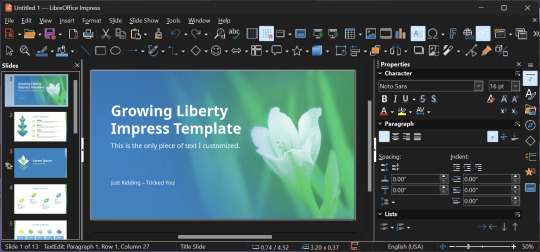
I can't say I've used it much myself yet. I do not personally like using office software except when I have to for school.
OpenShot
OpenShot Video Editor is, as the name suggests, a video editing program. It has industry-standard features like splicing, layering, transitions, and greenscreen.
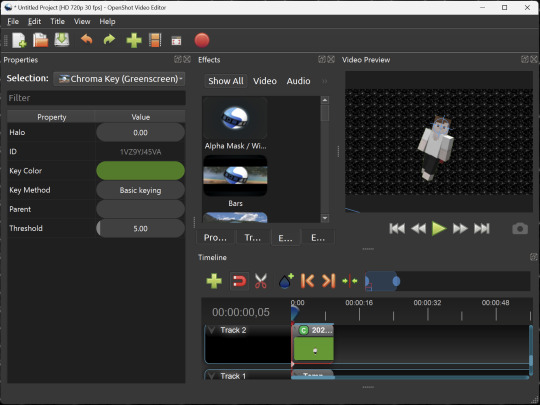
I've only made one video with it so far, but I'm already very happy with it. I had already paid for a video editor (Cyberlink PowerDirector Pro), but I needed to reinstall it and I didn't remember how. Out of desperation, I searched up "FOSS video editor" and I'm so glad I did. There's no launcher, there's no promotion of other apps and asset packs—it's just a video editor with a normal installer.
GIMP
GNU Image Manipulation Program is an image editor, much like Photoshop. Originally created for Linux but also available for Windows and MacOS, it provides plenty of functionality for editing images. It is a bit unintuitive to learn at first, though.
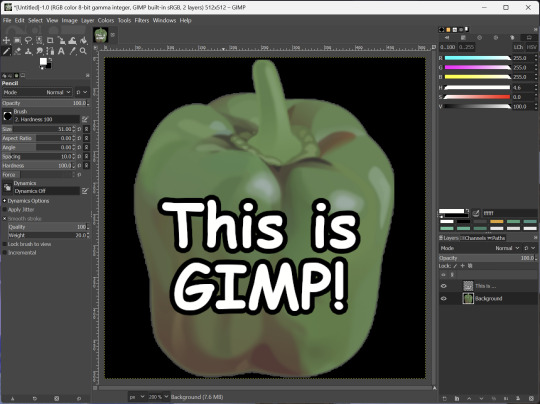
I've used it to create and modify images for years, including logos, really bad traceover art, and Minecraft textures. It doesn't have certain advanced tech like AI paint-in, but it has served my purposes well and it might just work for yours!
(Be sure to go to Windows > Dockable Dialogs > Colors. I have no idea why that's not enabled by default.)
Audacity
Audacity is an audio editing program. It can record, load, splice, and layer audio files and apply effects to them.
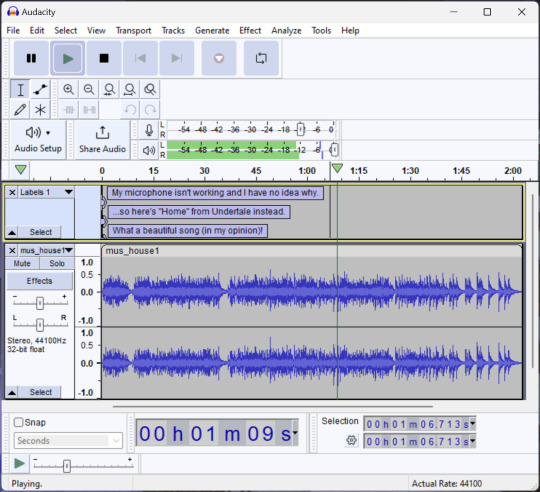
Audacity is another program I've used for a long time. It is not designed to compose music, but it is great for podcasts, simple edits, and loading legacy MS Paint to hear cool noises.
7-Zip
7-Zip is a file manager and archive tool. It supports many archive types including ZIP, RAR, TAR, and its own format, 7Z. It can view and modify the contents of archives, encrypt and decrypt archives, and all that good stuff.

Personally, I use 7-Zip to look inside JAR files for Minecraft reasons. I must admit that its UI is ugly.
Firefox
Firefox is an internet browser, much like Google Chrome, Microsoft Edge, or Safari. While browsers are free, many of them include tracking or other anti-consumer practices. For example, Google plans to release an update to Chromium (the base that most browsers are built from these days) that makes ad blockers less effective by removing the APIs they currently rely on.
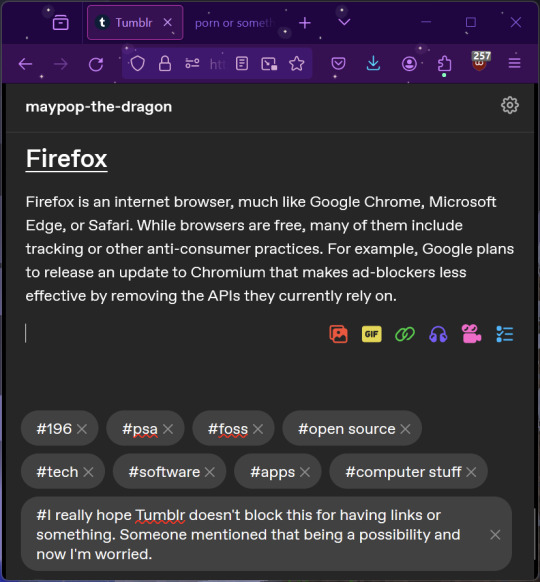
Aside from fighting monopolies, benefits include: support for animated themes (the one in the picture is Purple Night Theme), good ad blockers forever, an (albeit hidden) compact UI option (available on about:config), and a cute fox icon.
uBlock Origin
As far as I know, uBlock Origin is one of the best ad blockers there is.
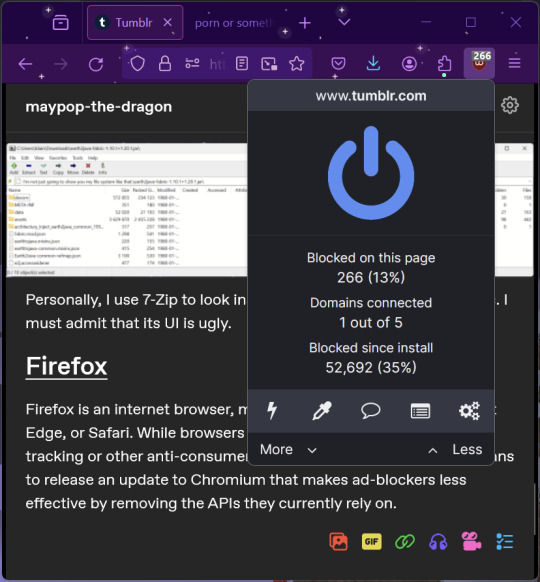
I was on a sketchy website with my brother, and he was using Opera GX's ad blocker. Much of the time when he clicked on anything, it would take us to a random sponsored page. I suggested that he try uBlock Origin, and with uBlock Origin, that didn't happen anymore.
Linux
Linux is a kernel, but the term is often used to refer to operating systems (much like Windows or MacOS) built on it. There are many different Linux-based operating systems (or "distros") to choose from, but apps made for Linux usually work on most popular distros. You can also use many normally Windows-only apps on Linux through compatibility layers like WINE.
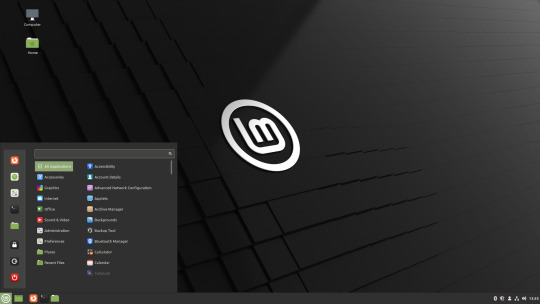
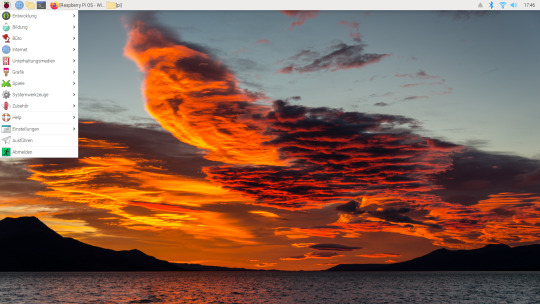
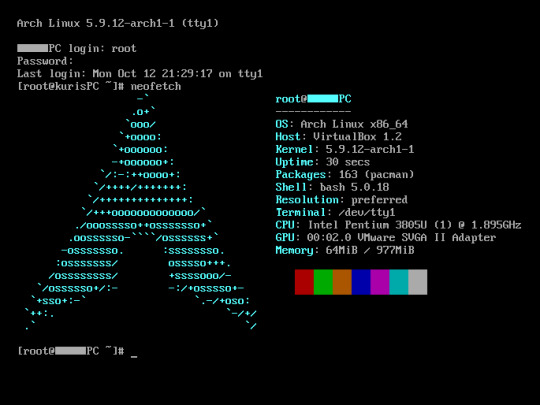
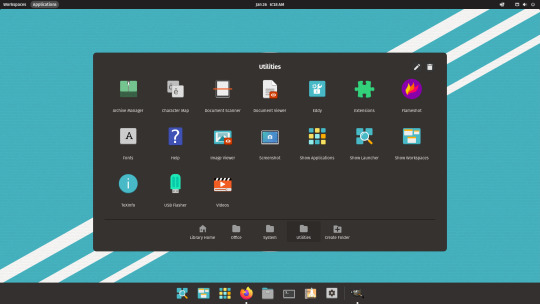
I don't have all four of these, so the images are from Wikipedia. I tried to show a variety of Linux distros made for different kinds of users.
If you want to replace your operating system, I recommend being very careful because you can end up breaking things. Many computer manufacturers don't care about supporting Linux, meaning that things may not work (Nvidia graphic cards notoriously have issues on Linux, for example).
Personally, I tried installing Pop!_OS on a laptop, and the sound output mysteriously doesn't work. I may try switching to Arch Linux, since it is extremely customizable and I might be able to experiment until I find a configuration where the audio works.
Many Linux distros offer "Live USB" functionality, which works as both a demo and an installer. You should thoroughly test your distro on a Live USB session before you actually install it to be absolutely sure that everything works. Even if it seems fine, you should probably look into dual-booting with your existing operating system, just in case you need it for some reason.
Happy computering!
#196#psa#foss#open source#tech#software#apps#computer stuff#I really hope Tumblr doesn't block this for having links or something. Someone mentioned that being a possibility and now I'm worried.#please reblog#2024-01-26
47 notes
·
View notes
Text
The world is on fire, here's what you can do
There are selected links at the end for further reading and i’ve drawn from some of them to make this post.
I want to emphasize that the way to go forward is to keep focusing on how you personally can empower yourself, and empower your communities. Because right now the Musk-Trump-Thiel coalition’s goal is to keep throwing shit at you to make you keel over in despair because it’s all so overwhelming, and to combat that despair, that overwhelm, you have to focus on what you can do:
1. Connect with your communities. You’re gonna have to talk to people. Not just people online, but people you know. Get to know more people. Create mutual aid communities. Brain storm together what skills and supplies can be shared. How needs can be met. I’m not advocating you don’t use government programs/help, I’m advocating preparing for situations where those may not exist. In fact, if you are using a government program/service, keep using it, no matter what the TV says about how some executive order shut it down. It’s not shut down until it’s legally shut down. Until the workers on location tell you it’s shut down. Keep using them. Do not comply in advance. Do not comply at all. Make them make you.
2. Skill up. Learn new skills that will help you and your communities, and teach the skills you have to others. This is the perfect opportunity to learn first aid, basic chemistry, fixing cars, how to organize or protest, how to preserve food, how to grow more, how to make fabrics and upcycle existing items, how to read law, how to hack a computer or a system. Learn alternative methods of keeping in contact over long distances. Practice good cyber security, drop those big social medias and get on federated ones. Switch to Mozilla and Linux. Learn a new foreign language. Take up some self-defence.
3. Use the internet with intent. Don’t doom scroll. It’s not going to help. You’re not getting good information even from “left wing” videos when they advertise their content with clickbait. Those videos will not help you. They’ll either make you feel despair, or they’ll give you a false sense of security that someone else, somewhere else, is already taking care of this, and you don’t have to do anything. It’ll be fine. That’s not a proactive state of mind. When you get online, have a goal what information you’re looking for or what you’re communicating, then get out. When you need your lil relaxation time, if you want to do that online, set a time limit. There are a lot of ad-ons you can use on browsers to do this if you don’t quite trust yourself yet.
4. Get involved in politics. Check who your local representatives are, and contact them. Press them on their stances and what they’re doing about them. Show up at town hall. Make flyers, make zines, make stickers. Hell, show up in your community meetings. These are the people you live with. They may not be perfect, but life is not perfect. We can still keep making it better all the time. We got from celebrating public dismemberment with horses to that being an abhorrent idea. Humans do develop for better. But we can’t do that alone, and we can’t do that passively. It’s a conscious, combined effort.
LINKS
For tracking what laws you should be keeping an eye out:
For keeping track of Trump BS:
Find out who your political key figures are on every level in your state: https://ballotpedia.org/Local_Politics
How to create a mutual aid network: https://afsc.org/news/how-create-mutual-aid-network
How to survive an oppressive government from an indigenous anarchist perspective (includes further links):
Some handy guides for no particular reason:
There's a fun video in this link:
6 notes
·
View notes
Note
Hi there! Bit of a weird question, and I’m not sure if this is the right blog for this, but… best laptop for privacy? I’m going to go to uni in a year and my parents have said that they’re going to buy me a laptop, which is awesome, except— I don’t know which one to chose? I’ve never had a laptop before but I try to take being private online as seriously as I can, and so I don’t really care… well, like, I do care that the laptop has good storage and works and stuff, but I care mostly about how private it is. Which one supports adding privacy-related stuff the best? Which one steals your data the least? I… am actually not sure what kind of questions I should be asking, since… again, never had a laptop before, and I don’t know what about its make makes it private (other than like general online privacy practices across all devices), so I was just wondering if you had any recommendations for me? Tldr: don’t care about fancy features, just want a laptop that more or less works, but would love privacy to be the main focus. This can sort of come at the expense of convenience - I don’t care it if’s harder to set up, use, etc., so long as I can connect to the internet with it.
So the hardware is pretty agnostic on this, the place where privacy is going to become an issue is in the software.
Windows loves to track you and send your data back to homebase; Apple is a walled garden that doesn't let people get deep into configurations; linux is intimidating for a lot of people.
Your actual best bet on privacy would be to get a laptop with no OS and install a linux distro on it, but it sounds like that's probably not something that's terribly approachable for you. So in that case I'd recommend getting a Windows laptop (mac prices aren't worth it) and going through this list to change the settings to ensure better privacy.
HOWEVER please note that you should be getting a laptop with a full OS. Windows has an option for "windows 11s" or "windows 10s" and first off you should be going with 11 at this point but second that "s" means that there are pretty strict limitations on what you can do as a user in terms of configuration and installation.
If you are willing to pay a bit more for Windows 11 Pro instead of windows 11 Home, the pro license cuts off some of the more annoying tracking that Windows does automatically, but I'd say you're better off simply getting the home license and really digging into the settings and getting to know it and setting it up for yourself.
BUT if it's at all possible, honestly I'd say get a bare metal laptop (that means it's just the hardware, no software, you need to install an operating system before you do anything) and install linux. HOWEVER keep in mind that there are some significant downsides to using linux as a student, mostly that you'll likely run into software at some point that you won't be able to install. Also if you're not already pretty good with computers it can be difficult to keep a linux machine running (but very easy to make it private; that's the tradeoff - you can make it more secure more easily, but you really have to know how to fix your own computer if something goes wrong.)
For your situation, again, I think a Windows 11 Home laptop with the settings adjusted is your best bet.
Absolutely positively don't get a chromebook (you've got no control of the settings on a chromebook and the thing is made to feed information to google) and don't get a mac (you can get better specs on a PC at a lower cost).
For an idea of budget on this, I'd say you can probably get something from Dell, Lenovo, or HP for around $650-1000 dollars that's got decent specs (12th gen or newer i5 processor, 16gb RAM, 512GB SSD) and maybe something more like $500-800 from acer, asus, or samsung. Whatever computer you end up getting, you should get the added drop protection warranty because that means the manufacturer will fix your laptop if you drop it, something that is a bigger deal for college students than most people (because of your environment you're more likely to end up with drop damage than a lot of people AND because you're a college student you probably won't be able to afford to fix or replace the computer)
Good luck!
43 notes
·
View notes
Text
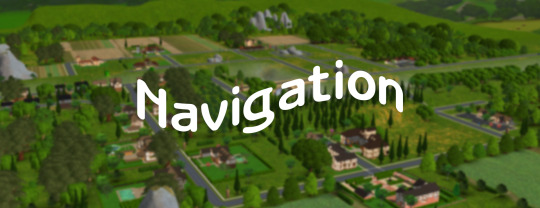
Meowdy ! I'm Rain (or Ashe), but you can call me Spell, and welcome to my personal little corner where I mainly post hair recolours. I'm forever in SimPE, Photoshop, and Linux hell.
Requests for recolouring hair in Afterglow, Poppet, and Pooklet/Io are OPEN
Links
My CC
Mediafire Folder / Sims File Share Folder
Afterglow Hair, Poppet Hair, Pooklet/Io Hair
My Afterglow Volatile Bases
My Resources
CC Finds
Medieval Defaults Database Project
Afterglow Hair Archive
🏴☠️ Free Sims Stuff 🏴☠️
TOU
Open* TOU, but I do not consent to anything I made, CC files or preview pictures to be used in CC folders (hazardous practice) and hateful/derogatory content. Reuploads for archival purposes are allowed and encouraged. Reuploads for non-English websites and regions where tumblr is banned is allowed.
ETC
I do not guarantee that any of my CC works on Legacy Collection
I often forget to respond to DMs and asks a lot, and sometimes Tumblr just refuses to notify me of any response 🤷
Please don't send links in my asks. Tumblr will probably delete it, so just say "Can you do X hair by this creator?"
I do not convert hair anymore, I simply do not have the time nor energy to do so
If you have an issue with me or my behaviour, I'd actually love a DM or ask about it. It's the combined autistic urge to know why, and I also want to be a better person
I'm from the South, but I type words ending in -or the English spelling (colour, behaviour, flavour, etc.) I just socialized with a lot of British people online and it stuck with me
I am willing to teach others how to create CC, and I help troubleshoot CC creation issues because 1. it's either easy to fix or 2. I have already fixed it in my own experience. But I do not troubleshoot game issues


50 notes
·
View notes
Text
The Complete Manual for Understanding Ethical Hacking
In order to evaluate an organization's defenses, ethical hacking—also referred to as penetration testing or white-hat hacking—involves breaking into computers and other devices lawfully. You've come to the correct spot if you're interested in finding out more about ethical hacking. Here's a quick start tutorial to get you going.

1. "Getting Started with the Basics"
Networking and computer science principles must be thoroughly understood before getting into ethical hacking. Here are some crucial aspects to pay attention to: Operating Systems: Acquire knowledge of several operating systems, with a focus on Linux and Windows. Learning Linux is essential because a lot of hacking tools are made to run on it. Networking: It's essential to comprehend how networks operate. Find out more about
protocols include HTTP, HTTPS, DNS, TCP/IP, and others. Understanding data flow across networks facilitates vulnerability detection. Programming: It's crucial to know at least a little bit of a language like Python, JavaScript, or C++. Writing scripts and deciphering the code of pre-existing tools are made possible by having programming expertise.
2. Making Use of Internet Resources To learn more about ethical hacking, there are a ton of internet resources available. Here are a few of the top ones: Online Education: Online learning environments such as Pluralsight, Coursera, and Udemy provide in-depth instruction in ethical hacking. "Penetration Testing and Ethical Hacking" on Pluralsight and "The Complete Ethical Hacking Course: Beginner to Advanced" on Udemy are two recommended courses. Channels on YouTube: HackerSploit, The Cyber Mentor, and LiveOverflow are just a few of the channels that offer helpful tutorials and walkthroughs on a variety of hacking tactics.
3. Exercising and Acquiring Knowledge The secret to being a skilled ethical hacker is experience. Here are some strategies to obtain practical experience:
Capture the Flag (CTF) Tournaments: Applying your abilities in CTF tournaments is a great idea. CTF challenges are available on websites like CTFtime and OverTheWire, with difficulty levels ranging from novice to expert. Virtual Labs: It is essential to set up your virtual lab environment. You can construct isolated environments to practice hacking without worrying about the law thanks to programs like VMware and VirtualBox. Bug Bounty Programs: Websites such as HackerOne and Bugcrowd link corporations seeking to find and address security holes in their systems with ethical hackers. Engaging in these initiatives can yield practical experience and financial benefits.

Dedication and ongoing education are necessary to learn ethical hacking. You can become a skilled ethical hacker by learning the fundamentals, using internet resources, and acquiring real-world experience. Always remember to hack wisely and ethically. Cheers to your hacking! I appreciate your precious time, and I hope you have an amazing day.
7 notes
·
View notes
Text
How to Transition from Biotechnology to Bioinformatics: A Step-by-Step Guide

Biotechnology and bioinformatics are closely linked fields, but shifting from a wet lab environment to a computational approach requires strategic planning. Whether you are a student or a professional looking to make the transition, this guide will provide a step-by-step roadmap to help you navigate the shift from biotechnology to bioinformatics.
Why Transition from Biotechnology to Bioinformatics?
Bioinformatics is revolutionizing life sciences by integrating biological data with computational tools to uncover insights in genomics, proteomics, and drug discovery. The field offers diverse career opportunities in research, pharmaceuticals, healthcare, and AI-driven biological data analysis.
If you are skilled in laboratory techniques but wish to expand your expertise into data-driven biological research, bioinformatics is a rewarding career choice.
Step-by-Step Guide to Transition from Biotechnology to Bioinformatics
Step 1: Understand the Basics of Bioinformatics
Before making the switch, it’s crucial to gain a foundational understanding of bioinformatics. Here are key areas to explore:
Biological Databases – Learn about major databases like GenBank, UniProt, and Ensembl.
Genomics and Proteomics – Understand how computational methods analyze genes and proteins.
Sequence Analysis – Familiarize yourself with tools like BLAST, Clustal Omega, and FASTA.
🔹 Recommended Resources:
Online courses on Coursera, edX, or Khan Academy
Books like Bioinformatics for Dummies or Understanding Bioinformatics
Websites like NCBI, EMBL-EBI, and Expasy
Step 2: Develop Computational and Programming Skills
Bioinformatics heavily relies on coding and data analysis. You should start learning:
Python – Widely used in bioinformatics for data manipulation and analysis.
R – Great for statistical computing and visualization in genomics.
Linux/Unix – Basic command-line skills are essential for working with large datasets.
SQL – Useful for querying biological databases.
🔹 Recommended Online Courses:
Python for Bioinformatics (Udemy, DataCamp)
R for Genomics (HarvardX)
Linux Command Line Basics (Codecademy)
Step 3: Learn Bioinformatics Tools and Software
To become proficient in bioinformatics, you should practice using industry-standard tools:
Bioconductor – R-based tool for genomic data analysis.
Biopython – A powerful Python library for handling biological data.
GROMACS – Molecular dynamics simulation tool.
Rosetta – Protein modeling software.
🔹 How to Learn?
Join open-source projects on GitHub
Take part in hackathons or bioinformatics challenges on Kaggle
Explore free platforms like Galaxy Project for hands-on experience
Step 4: Work on Bioinformatics Projects
Practical experience is key. Start working on small projects such as:
��� Analyzing gene sequences from NCBI databases ✅ Predicting protein structures using AlphaFold ✅ Visualizing genomic variations using R and Python
You can find datasets on:
NCBI GEO
1000 Genomes Project
TCGA (The Cancer Genome Atlas)
Create a GitHub portfolio to showcase your bioinformatics projects, as employers value practical work over theoretical knowledge.
Step 5: Gain Hands-on Experience with Internships
Many organizations and research institutes offer bioinformatics internships. Check opportunities at:
NCBI, EMBL-EBI, NIH (government research institutes)
Biotech and pharma companies (Roche, Pfizer, Illumina)
Academic research labs (Look for university-funded projects)
💡 Pro Tip: Join online bioinformatics communities like Biostars, Reddit r/bioinformatics, and SEQanswers to network and find opportunities.
Step 6: Earn a Certification or Higher Education
If you want to strengthen your credentials, consider:
🎓 Bioinformatics Certifications:
Coursera – Genomic Data Science (Johns Hopkins University)
edX – Bioinformatics MicroMasters (UMGC)
EMBO – Bioinformatics training courses
🎓 Master’s in Bioinformatics (optional but beneficial)
Top universities include Harvard, Stanford, ETH Zurich, University of Toronto
Step 7: Apply for Bioinformatics Jobs
Once you have gained enough skills and experience, start applying for bioinformatics roles such as:
Bioinformatics Analyst
Computational Biologist
Genomics Data Scientist
Machine Learning Scientist (Biotech)
💡 Where to Find Jobs?
LinkedIn, Indeed, Glassdoor
Biotech job boards (BioSpace, Science Careers)
Company career pages (Illumina, Thermo Fisher)
Final Thoughts
Transitioning from biotechnology to bioinformatics requires effort, but with the right skills and dedication, it is entirely achievable. Start with fundamental knowledge, build computational skills, and work on projects to gain practical experience.
Are you ready to make the switch? 🚀 Start today by exploring free online courses and practicing with real-world datasets!
#bioinformatics#biopractify#biotechcareers#biotechnology#biotech#aiinbiotech#machinelearning#bioinformaticstools#datascience#genomics#Biotechnology
3 notes
·
View notes
Text
Learn Linux Commands Online
Explore how to learn Linux commands online with LabEx. Practise your Linux skills through interactive tutorials and hands-on labs. Start mastering Linux: https://labex.io/skilltrees/linux
1 note
·
View note
Note
Since you use Arch:
1) What made you choose Arch?
2) How hard is it to use?
3) If you do that, how hard is it to dual boot with Arch?
(I think many/maybe most Linux OS have documentation, but I'm not very familiar with Arch other than the memes. My main debugging skills are looking stuff up and asking people, in that order)
(The 3 distros on top of my to-try list are Debian, Mint, and Arch. I'd be delighted to have a reason to put one of them higher on the list.)
1. The size of the repository. With the AUR plus the already large official repository practically every program no matter how niche is one command away. And also the documentation is fucking incredible. I've been trying out Debian lately but honestly I might switch back because its repository sucks (latest neovim version is 6.x????) And the documentation is awfulllll.
2. Just as easy as every other distro. Also since you set up the environment you can tune it to your need. I tend to work exclusively through a terminal so I rock a super minimal setup.
Setup can be kinda tricky, installing is a process but the guide is very easy to follow, and there is also the archinstall script that makes the process way way simpler.
Setting up your environment is a rabbit hole but it's mostly installing programs and setting then up. You can install a display manager and KDE and have a totally fine easy to use experience with next to how effort. And while setting up I can practically guarantee the wiki has a detailed page with all the info you may need.
TL;DR the install process can be complex, setting up a desktop environment is super easy, and using it is very easy.
3. Dual Booting is either super simple. Or genuinely the hardest thing you can do with linux. If you dont mind manually opening the bios and switching the boot source to switch its easy.
If you want to be able to launch windows from GRUB without opening the bios prepare for hell on earth. When I tried it, it took a week and I never got it to work. And it's very easy to fuck up your boot loader and fixing that is extremely difficult with few resources online.
I personally
18 notes
·
View notes
Note
hiii, i am also interested in cybersecurity but don't know how to gain skills to start it as a career after graduation next year
Hi! First of all, good luck with your last year before graduation! it can be kinda hectic and kinda scary, but there are lots of good things in store!
The cool thing about cybersecurity (and computer science in general tbh) is that there are lots of opportunities to learn things on your own!
(Brief side note: my recommendations are U.S.-centric, just because that's where I am and where my experience is. The industry may be a bit different if you're in a different country, but lots of things should be the same.)
This got very long, so I'm putting it under a read more. The tl;dr is:
play CTFs
get an entry-level certification (or even just study for one!) - the CompTIA Security+ is a great choice
join or start a cybersecurity club on campus (or join a professional organization like Women in Cybersecurity)
stay up to date with cybersecurity news
learn some skills on your own time: networking, programming, general IT skills, etc.
If anyone wants more information about any of these suggestions, let me know & I'd love to make a separate post about them!
CTFs Capture the Flag games are how I initially got into cybersecurity and they're a fantastic way to practice new skills in a fun, real-world kind of environment. If you've never done one, you absolutely should! Here are a few of my faves:
Cyber FastTrack is my top recommendation. It's only available to current college students in the U.S. (and requires U.S. citizenship), but the challenges are fantastic & they have awesome learning materials. It generally runs October-April each year. I did well in this CTF and got a scholarship for the SANS.edu Undergraduate Certificate in Applied Cybersecurity - that's 4 certifications & nearly $19k of free training. It's ridiculous and I love it. Highly recommend.
CyberStart is the same set of challenges, but you have to pay to access all of it. It also has programs similar to Cyber FastTrack for high school students, high school girls, and UK and Canadian students - check their about page.
picoCTF - I haven't done this one before but it's constantly recommended as a good beginner CTF. It looks like you can practice online at any time, but they also do a yearly high school competition.
OverTheWire Bandit - This site has several different wargames (similar to CTFs) that teach you different topics, but Bandit is the one to start with. It teaches you lots of Linux things & will give you the skills to play the others.
Certifications Certifications are a recommendation or a requirement for many (if not the majority) of cybersecurity jobs. They're not a replacement for experience, but getting one as a student demonstrates that you have the passion and work ethic to pursue cybersecurity on your own. Studying for an entry-level certification is also a fantastic way to get a general understanding of the field and pick up some essential knowledge.
The main one I see recommended is the CompTIA Security+. I studied for this certification very slowly for a long period of time, because I was using it to learn cybersecurity in general. It covers a lot of material but it also goes very in-depth in places. I got this cert because I knew it could get my foot in the door in lots of places, and just telling people that I was studying for it was a way to impress potential employers!
Professor Messer has a ton of fantastic, 100% free training material for the CompTIA certifications. In addition, you can use all the free resources that you have as a student to study for this. I used LinkedIn Learning courses, check if your college or local library give you free access to this.
In addition, there are technically 2 CompTIA certifications you should have before you get the Security+: the A+ and the Network+. The A+ is just general IT knowledge, and you can probably skip it if you're decent with computers. Having a solid understanding of networking is super important, so it's worth going through the material for the Network+ even if you're not going to pay to take the exam.
(Also, taking the Security+ exam while you're a student lets you get the academic discount! I think that saved me $100-$150.)
Clubs and Professional Organizations Join a cybersecurity club at your school if there is one. It's a great way to meet other students interested in the same things and get advice. They may also have tech talks, run CTF events, or have local professionals come and speak. If there's no cybersecurity club at your campus, consider starting one!
You can also join a professional organization. The only one that I know of is Women in Cybersecurity (WiCyS), and they do lots of great stuff. Student membership is $20/year, and then you get access to their webinars, a mentorship program, their member community, and student scholarships to the WiCyS conference. I was lucky enough to get a scholarship to the conference this past March and it was a really fantastic experience. I was also the president of my campus's student WiCyS chapter! If you're looking to start a cybersecurity club, WiCyS has good support and resources for their student chapters.
Stay Informed About Cybersecurity News Cybersecurity is always evolving, so it's important to have current knowledge of what's happening in the industry. This gives you real-world examples that you can keep in your mind while you're learning new concepts, and it's also a way to impress employers during interviews. These are a few of my favorite sources:
SANS Internet Storm Center StormCast Podcast - 5 minutes of security news every weekday morning
Blogs:
Krebs on Security
Schneier on Security
Malwarebytes Labs
Learn Skills on Your Own Cybersecurity involves working with lots of different technologies. Having solid foundations in these areas will help you a lot:
computer networking (OSI model, ports & protocols, how the internet works, firewalls, etc.)
Linux commands & Windows PowerShell
programming/scripting
cryptography basics
"everyday" security: if you're the IT person for your friends & family, know how to answer questions like:
"How do I set a good password?"
"Should I use a password manager?" (yes.)
"Where should I use MFA?" (everywhere.)
"How do I keep my home network secure?"
"How can I avoid getting scammed?"
This DIY Feminist Cybersecurity Guide is one of my favorites for general security hygiene information.
This got really long (over 1k words! wow!), but I hope it was helpful! Please feel free to send me any more questions you might have, whether specific or broad! I think cybersecurity is a great place to be and I love sharing resources and talking about it!
#I hope this was helpful!!! I also had a fun time writing this lol#ask me more cybersecurity/compsci questions lol I am a nerd and I enjoy answering them haha#asks#cybersecurity
56 notes
·
View notes
Text
Obsidian And RTX AI PCs For Advanced Large Language Model
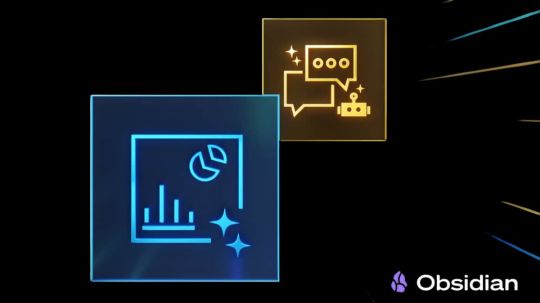
How to Utilize Obsidian‘s Generative AI Tools. Two plug-ins created by the community demonstrate how RTX AI PCs can support large language models for the next generation of app developers.
Obsidian Meaning
Obsidian is a note-taking and personal knowledge base program that works with Markdown files. Users may create internal linkages for notes using it, and they can see the relationships as a graph. It is intended to assist users in flexible, non-linearly structuring and organizing their ideas and information. Commercial licenses are available for purchase, however personal usage of the program is free.
Obsidian Features
Electron is the foundation of Obsidian. It is a cross-platform program that works on mobile operating systems like iOS and Android in addition to Windows, Linux, and macOS. The program does not have a web-based version. By installing plugins and themes, users may expand the functionality of Obsidian across all platforms by integrating it with other tools or adding new capabilities.
Obsidian distinguishes between community plugins, which are submitted by users and made available as open-source software via GitHub, and core plugins, which are made available and maintained by the Obsidian team. A calendar widget and a task board in the Kanban style are two examples of community plugins. The software comes with more than 200 community-made themes.
Every new note in Obsidian creates a new text document, and all of the documents are searchable inside the app. Obsidian works with a folder of text documents. Obsidian generates an interactive graph that illustrates the connections between notes and permits internal connectivity between notes. While Markdown is used to accomplish text formatting in Obsidian, Obsidian offers quick previewing of produced content.
Generative AI Tools In Obsidian
A group of AI aficionados is exploring with methods to incorporate the potent technology into standard productivity practices as generative AI develops and speeds up industry.
Community plug-in-supporting applications empower users to investigate the ways in which large language models (LLMs) might improve a range of activities. Users using RTX AI PCs may easily incorporate local LLMs by employing local inference servers that are powered by the NVIDIA RTX-accelerated llama.cpp software library.
It previously examined how consumers might maximize their online surfing experience by using Leo AI in the Brave web browser. Today, it examine Obsidian, a well-known writing and note-taking tool that uses the Markdown markup language and is helpful for managing intricate and connected records for many projects. Several of the community-developed plug-ins that add functionality to the app allow users to connect Obsidian to a local inferencing server, such as LM Studio or Ollama.
To connect Obsidian to LM Studio, just select the “Developer” button on the left panel, load any downloaded model, enable the CORS toggle, and click “Start.” This will enable LM Studio’s local server capabilities. Because the plug-ins will need this information to connect, make a note of the chat completion URL from the “Developer” log console (“http://localhost:1234/v1/chat/completions” by default).
Next, visit the “Settings” tab after launching Obsidian. After selecting “Community plug-ins,” choose “Browse.” Although there are a number of LLM-related community plug-ins, Text Generator and Smart Connections are two well-liked choices.
For creating notes and summaries on a study subject, for example, Text Generator is useful in an Obsidian vault.
Asking queries about the contents of an Obsidian vault, such the solution to a trivia question that was stored years ago, is made easier using Smart Connections.
Open the Text Generator settings, choose “Custom” under “Provider profile,” and then enter the whole URL in the “Endpoint” section. After turning on the plug-in, adjust the settings for Smart Connections. For the model platform, choose “Custom Local (OpenAI Format)” from the options panel on the right side of the screen. Next, as they appear in LM Studio, type the model name (for example, “gemma-2-27b-instruct”) and the URL into the corresponding fields.
The plug-ins will work when the fields are completed. If users are interested in what’s going on on the local server side, the LM Studio user interface will also display recorded activities.
Transforming Workflows With Obsidian AI Plug-Ins
Consider a scenario where a user want to organize a trip to the made-up city of Lunar City and come up with suggestions for things to do there. “What to Do in Lunar City” would be the title of the new note that the user would begin. A few more instructions must be included in the query submitted to the LLM in order to direct the results, since Lunar City is not an actual location. The model will create a list of things to do while traveling if you click the Text Generator plug-in button.
Obsidian will ask LM Studio to provide a response using the Text Generator plug-in, and LM Studio will then execute the Gemma 2 27B model. The model can rapidly provide a list of tasks if the user’s machine has RTX GPU acceleration.
Or let’s say that years later, the user’s buddy is visiting Lunar City and is looking for a place to dine. Although the user may not be able to recall the names of the restaurants they visited, they can review the notes in their vault Obsidian‘s word for a collection of notes to see whether they have any written notes.
A user may ask inquiries about their vault of notes and other material using the Smart Connections plug-in instead of going through all of the notes by hand. In order to help with the process, the plug-in retrieves pertinent information from the user’s notes and responds to the request using the same LM Studio server. The plug-in uses a method known as retrieval-augmented generation to do this.
Although these are entertaining examples, users may see the true advantages and enhancements in daily productivity after experimenting with these features for a while. Two examples of how community developers and AI fans are using AI to enhance their PC experiences are Obsidian plug-ins.
Thousands of open-source models are available for developers to include into their Windows programs using NVIDIA GeForce RTX technology.
Read more on Govindhtech.com
#Obsidian#RTXAIPCs#LLM#LargeLanguageModel#AI#GenerativeAI#NVIDIARTX#LMStudio#RTXGPU#News#Technews#Technology#Technologynews#Technologytrends#govindhtech
3 notes
·
View notes
Text
One of the annoying things about Windows that I noticed before my switch to Linux is that there are two settings applications. There is the Control Panel, which has hung around since Windows 1.0 in 1985. But since Windows 8 there is also a Settings app.
The idea behind "Settings" is entirely about aesthetics instead of functionality. It's too look more modern and slick than Control Panel, which hasn't changed much since the 90s to my memory.
But to look more slick and less complicated, and because Windows has increasingly assumed its users are incompetent, "Settings" is also massively simplified. It lacks many of the functions that the control panel has. I think the idea is that too many options would be overwhelming and confusing to non-technical users. But many of the options in Control Panel that is not in Settings are very much necessary. So Control Panel sticks around. It's just that it is hidden and harder to find, while Settings is made easily accessible to the user.
And this is a very stupid way to do it. Having system settings for the same thing split across two different programs is neither user-friendly or intuitive. If you wanted to or needed to change a setting, you have to first go to the easily available Settings App and 90% of the time find that that the setting is not there. And then you have to know that there is a second settings applications, that you aren't told about nor is it easy to find where you hopefully find what you need. I had to read an online guide for a Windows bug to be informed that Control Panel is still there in WIn8 and 10, and that it has options that aren't in settings. It's so hidden that I found it most easy to literally use Windows search for Control Panel whenever I needed it.
This is a case where simplicity is mistaken for user-friendliness. Having it split like this is far less accessible than having a single and fully-featured settings app. This is a case where practically every Linux desktop environments have Windows beat in terms of intuitive design, none of them do this.
Windows has had good UI ideas, I do use a Win95 like taskbar/start menu set-up right now, because it works. But damn, ever since Windows 8 they have completely lost the plot on this front.
20 notes
·
View notes